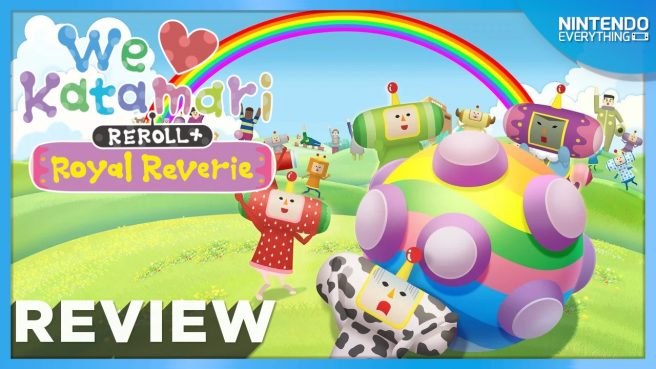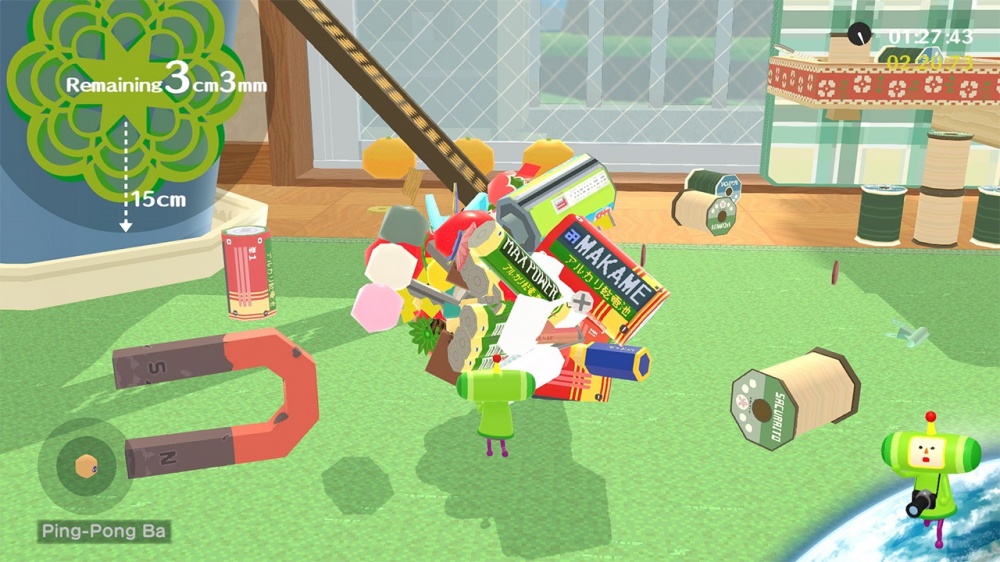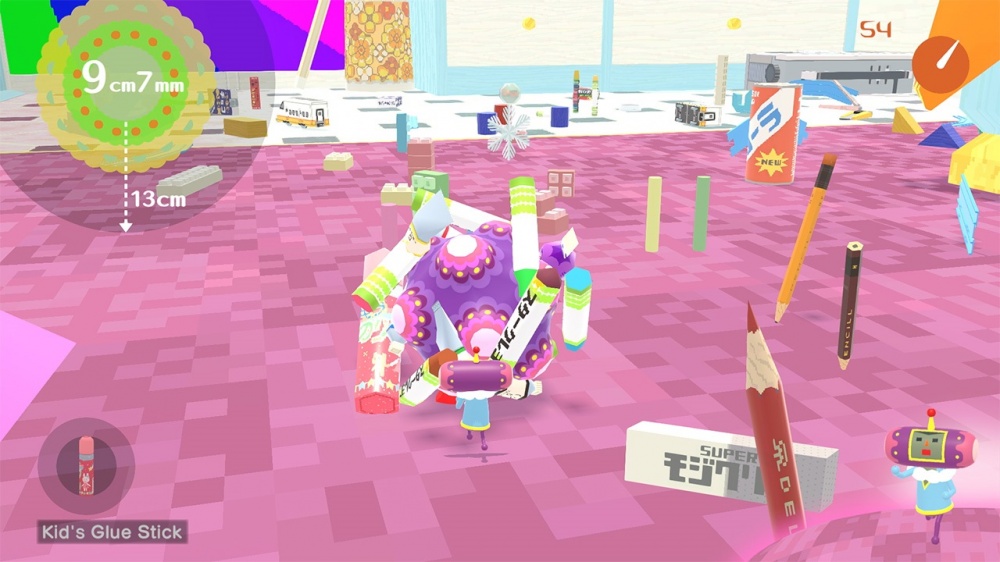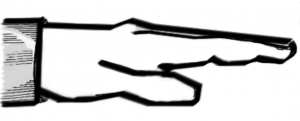System: Switch
Release date: June 2, 2023
Developer: Bandai Namco / Monkey Craft
Publisher: Bandai Namco
Sometimes, the biggest challenge we face as reviewers is in describing simple concepts – take Katamari, for instance. You play as a tiny green man called the Prince, and you’re tasked with rolling around a comically large and sticky ball. You navigate contained levels with the aim of rolling stuff up into that ball, and growing larger as a result. It sounds closer to a cheese-dream than a compelling gameplay loop, doesn’t it? Despite the outlandish premise, Bandai Namco’s Katamari series has garnered a sizable fanbase over the last two decades. While us super-fans collectively pine for a brand new entry in the series, a re-release of the franchise’s phenomenal second outing We Love Katamari has found its way into our lives courtesy of developer Monkey Craft. Out of all of the base expectations you can have for a remake or a remaster, matching or exceeding the original title in every metric is paramount. When it comes to We Love Katamari Reroll + Royal Reverie, we get a couple of hits, and a whole bunch of misses.
To kick things off with a positive slant, this release brings across every bit of content from the original version of the game, with no tonally awkward cuts made to account for “modern audiences”. With a series like Katamari, this is a vital step in maintaining the spirit of the franchise – as its madcap writing and distinctively Japanese humor underpin the entire experience. Each level begins with an in-universe fan of the Katamari series requesting that you roll up a Katamari centered around a specific theme like expensive items, delicious food, or zoo animals. You then stand on your father’s toe (he is the King of all Cosmos, and is also very very big), where he waxes lyrical about the upcoming challenge before dropping you into the level – be it a living room, a school classroom, or the bottom of a lake. The variety on offer within each stage easily out-paces this game’s predecessor Katamari Damacy, which received its own remaster for Switch back in 2018.
Where We Love Katamari really improves upon its precursor is in its pacing – and this proves to be the game’s secret sauce. At the beginning of each stage, you’ll be too small to roll up most of the objects around you. Some of the larger entities in the world (like people, animals and vehicles) will actively pose a threat as you initially explore the stage – knocking items off of your Katamari if you take a bump. This transforms the game into a delicate puzzle platformer – you’ll bob and weave through the level picking out objects you feel your Katamari can handle, that is, until you begin to grow. See, you’ll always have just enough time in each stage to really make a dent in the world around you. Once the in-game timer dips below 30 seconds or so, you’ll typically be at the stage where you’re beginning to steamroll through objects that would have dwarfed you in size at the beginning of the level. This results in a mad dash as you maniacally vacuum up an entire town’s worth of objects during your final few precious moments in each stage. This specific gameplay loop is where about 90% of Katamari’s lasting appeal can be found – It’s obsessive and compulsive in the best possible way. I can’t tell you how many times I restarted a stage with a minute left on the clock, thinking to myself “I can do better” – never out of frustration, but out of an eagerness to succeed.
Everything I’ve just said applies wholly to the original release of We Love Katamari, but sadly cannot be fully attributed to this re-release. Unfortunately, the game suffers a host of technical shortcomings that really dampen the appeal – a curious situation, considering how impeccably put together Katamari Damacy’s new version was five years ago. The first problem you’ll face is poor performance, especially once your Katamari has grown in size. Panning your camera across some of the larger levels in the game absolutely tanks the frame-rate, an issue that never occurred in the original game. As much as the series relies on careful coordination and speedy execution, you could maybe excuse this problem – that is, if the game didn’t also have an inferior draw distance to the original version too. Some stages rely on you avoiding certain objects whilst rolling up others, and the diminutive draw distance means that hazards often won’t appear until it’s much too late. Additionally, certain objects have their animation frame-rate cut back considerably the further away they are from the game’s camera. This only applies to certain objects in the scene, but it’s painfully obvious and hugely distracting. We Love Katamari’s irresistible gameplay loop is still there, nestled in place – but it has certainly been obfuscated by a lack of polish.
That’s not to say that developer Monkey Craft hasn’t made an effort here, as they have added multiple features to the base game that I’d describe as admirable, if a bit misguided. On the plus side numerous visual aids have been added to make it easier to figure out where to go in order to roll more stuff up, and to find new missions in the game’s serene overworld. This is a smart addition, even if on one occasion the UI made to assist me in finding new fans entirely blocked out the person I needed to locate – oops! Other, smaller inclusions include a new photo-mode and secret stickers you can find in each level. These feel like arbitrary inclusions that are slightly at odds with the focused nature of Katamari’s gameplay – I for one certainly wouldn’t want to waste a single second in any of the game’s levels if it can be avoided, and these features feel like they nudge you into doing just that.
Out of all the changes made to We Love Katamari, the two most egregious ones are the “new” levels, and a subjectively terrible visual overhaul. To address the game’s newly added stages, they’re really nothing to write home about – some are novel, but they mostly exist as subtly re-skinned variants of the base game’s levels. The visual changes are a bigger blunder in my eyes – I find it very difficult to get on board with the game’s new look. Forgoing the pastel colored warmth of the original version, the developers have opted for a tacky, garish renovation that pumps up the saturation, and injects a new lighting model into the game – complete with fancy dynamic shadows. I would have much preferred a studious recreation of the original game’s look – as we saw in Katamari Damacy’s re-release – but I don’t hate Monkey Craft for trying to breathe new life into a 20 year old game. The biggest flaw with this change is that it just hasn’t been implemented very well. Far too often I noticed shadows and lighting effects popping in and out of view in ways that didn’t seem intentional, along with a whole host of other pop-in related gaffes. Thankfully you can switch the game back to looking more like its old self over in Settings, however it doesn’t restore the original look entirely – instead, it just turns off the more flagrant lighting effects and mutes the color palette a little bit.
The Verdict
Despite the myriad defects, the more-ish gameplay loop baked into Katamari’s foundations can still be enjoyed in We Love Katamari Reroll + Royal Reverie. Sure, it’s rougher around the edges than practically every other game in the franchise, but it manages to deliver in spite of its shortcomings. With that said, this remake doesn’t match or surpass the original game where it matters, and for that, I feel a duty to reflect that in my verdict. While Katamari Damacy Reroll managed to dethrone its forebear and become the definitive version of that game, the same cannot be said this time around. When it comes time for me to replay this seminal game, I’ll likely be reaching for my PS2 copy despite the convenience of this game’s presence on Switch.
We Love Katamari Reroll + Royal Reverie copy provided by the publisher for the purposes of this review.



